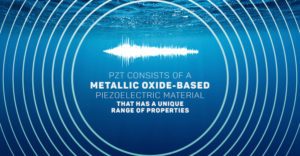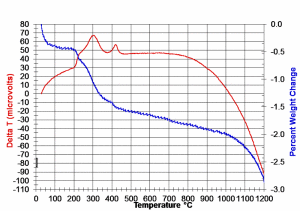After Manufacturing Part 3: Anatomy of a Single Element Transducer
 Transduction, in general terms, means to convert energy from one form to another. In terms of piezoelectric transducers, it means the conversion of electrical to mechanical energy and/or vice-versa. This can take place in a variety of mediums (air, liquid, etc.) using a variety of transducer designs.
To simplify our discussion,
Transduction, in general terms, means to convert energy from one form to another. In terms of piezoelectric transducers, it means the conversion of electrical to mechanical energy and/or vice-versa. This can take place in a variety of mediums (air, liquid, etc.) using a variety of transducer designs.
To simplify our discussion,
Read More...
After Manufacturing 1: Connecting to PZT Components
 In this months article we will be starting our "After Manufacturing" series of newsletters. These newsletters will focus primarily on "what to do?" with the piezo ceramics starting with this issue, connecting to piezo. Throughout the series we will be continuing with a logical progression or uses and design information
In this months article we will be starting our "After Manufacturing" series of newsletters. These newsletters will focus primarily on "what to do?" with the piezo ceramics starting with this issue, connecting to piezo. Throughout the series we will be continuing with a logical progression or uses and design information
Read More...
Transmitting Acoustic Signals Through Water: Echo Sounding
 There are many industries that need to “see” underwater. For example, companies that rely on sea transportation need to know how deep water is to ensure a ship does not run aground. Fishing operations need to find fish, and researchers hunt for shipwrecks.
Not only do they need to have reliable
There are many industries that need to “see” underwater. For example, companies that rely on sea transportation need to know how deep water is to ensure a ship does not run aground. Fishing operations need to find fish, and researchers hunt for shipwrecks.
Not only do they need to have reliable
Read More...
Ceramic Manufacturing Series – Testing and Packing PZT Ceramics
 In this month's article we will be discussing some of the most common electrical and physical properties specified by customers when purchasing PZT ceramics for a specific application, how to test for these often specified properties, and some general equipment choices.
Common Properties
Generally speaking, when ordering a PZT ceramic for a
In this month's article we will be discussing some of the most common electrical and physical properties specified by customers when purchasing PZT ceramics for a specific application, how to test for these often specified properties, and some general equipment choices.
Common Properties
Generally speaking, when ordering a PZT ceramic for a
Read More...
Ceramic Manufacturing Series – Poling PZT Ceramics
 To understand the poling process, a basic review of the crystal structure is helpful.
To understand the poling process, a basic review of the crystal structure is helpful.
Piezo Crystal Structure:
Typical PZT materials exhibit a perovskite structure. One can visualize this structure as a cube with eight large lead (Pb) ions at the corners of the cube. Six oxygen (O) ions are situated one inRead More...
Ceramic Manufacturing Series – Electroding PZT Ceramics
 This month we will be covering electrodes and electrode firing for PZT ceramics. We will primarily be discussing fired-on silver electrodes, but will touch on several other techniques commonly used in the industry.
This month we will be covering electrodes and electrode firing for PZT ceramics. We will primarily be discussing fired-on silver electrodes, but will touch on several other techniques commonly used in the industry.
Electrode Considerations:
When determining which electrode system is right for your application it is important to consider the endRead More...
Ceramic Manufacturing Series – Machining PZT Ceramics
If you have been following our manufacturing series of articles, then you know we have fired ceramic and are about to discuss shaping and machining. If you haven't been following, you should be!
When determining how to machine a ceramic component, it is important to remember that the finished electrical properties
Read More...
Ceramic Manufacturing Series – Firing Pressed PZT Components

Firing Pressed PZT Components
Taking the mystery out of firing profiles Jason Getz, Process Engineer Brian Julius, V.P. Manufacturing / Materials Engineer Ron Staut, V.P. Technology Once the PZT components have been pressed into green shapes (~60% dense), they are prepared for Binder Burn Out (BBO). BBO is one of the most critical process stepsRead More...
- SUBMIT A GUEST POST
-


Blog Authors


No Comments